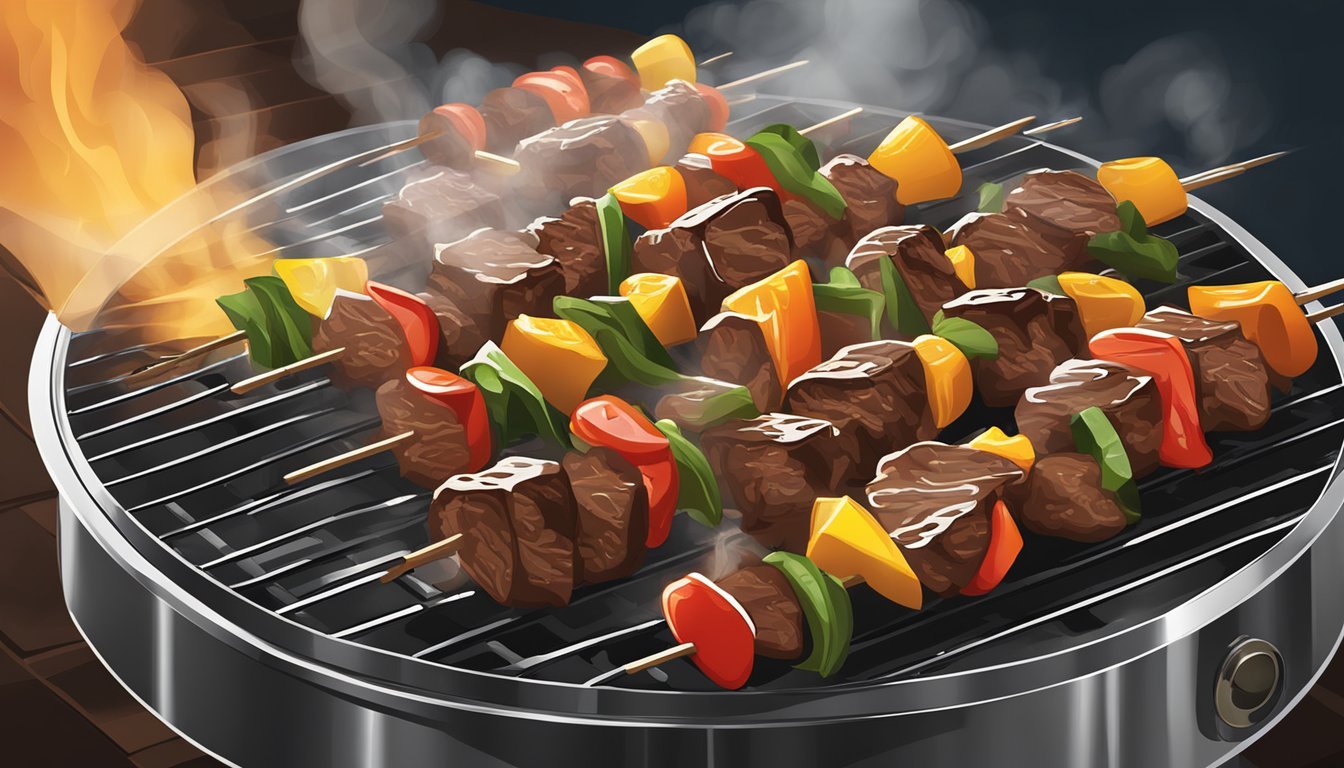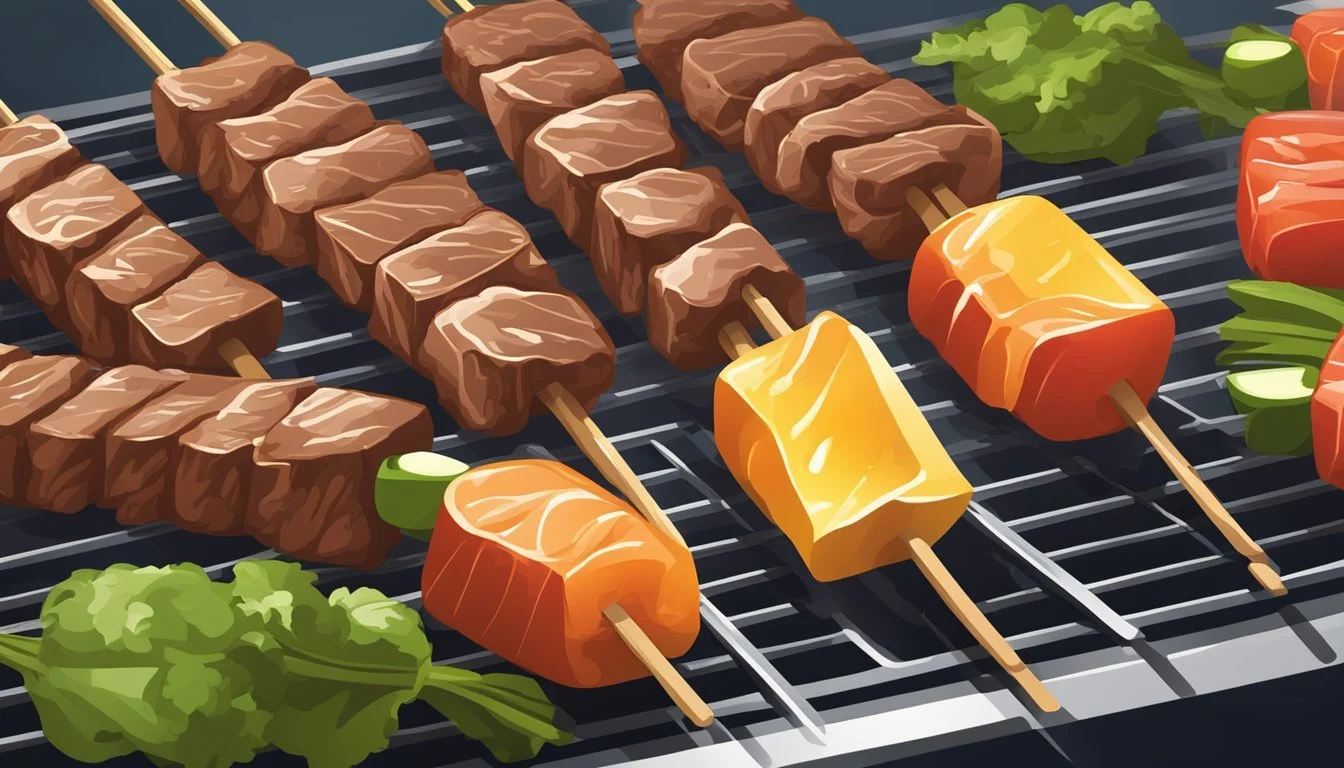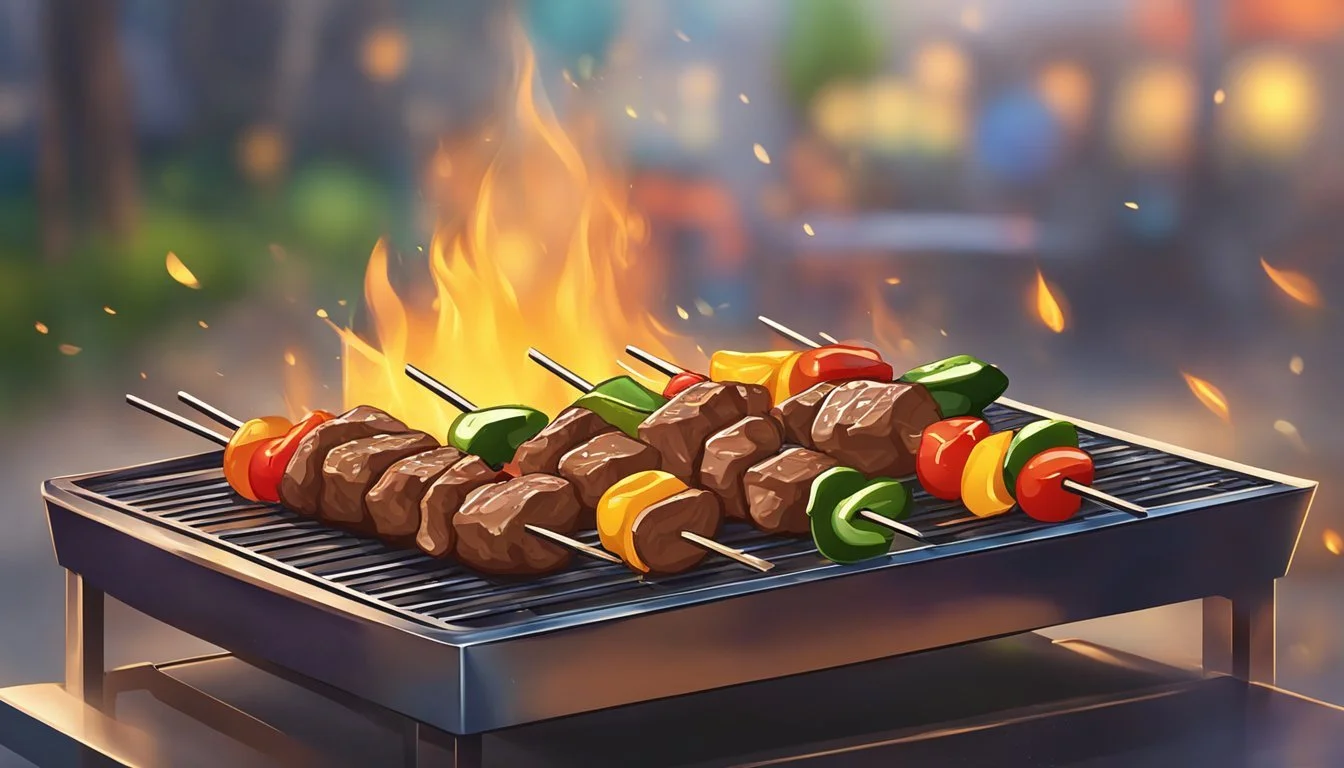Best Way to Reheat Beef Kabobs
Ensuring Juiciness and Flavor Retention
Reheating beef (What wine goes well with beef?) kabobs to maintain their juicy tenderness is possible with the right methods. Kabobs are a popular dish, often enjoyed for their flavorful marinated meats and vibrant vegetables grilled to perfection. However, the challenge arises when one needs to restore the just-off-the-grill freshness to leftovers without drying out the meat or making the vegetables soggy. Understanding the intricacies of reheating can ensure that the kabobs remain succulent and delicious as if they were freshly cooked.
A variety of reheating techniques exist, each with its own set of benefits for different foods. For beef kabobs, retaining moisture is key. Traditional reheating methods often risk overcooking the meat, which leads to a loss of the juiciness that makes kabobs so enjoyable. To achieve the best results, reheating must be approached with care, employing methods that work to distribute heat evenly while locking in the kabob’s natural flavors and juices. Whether using an oven, stovetop, or microwave, the approach needs to be adjusted to suit the delicate nature of cooked kabobs.
Cooking experts recommend strategies that not only bring the interior of the meat to the proper temperature but also revitalize the exterior for a slight crispness that adds texture. The utilization of additional moisture, controlled temperatures, and appropriate cookware can aid in recreating the ideal beef kabob experience. Through these practices, one can preserve the tenderness and taste that make kabobs a favored meal in various cuisines.
Understanding Reheating Meat
When reheating beef kabobs, the goals are to ensure maximum juiciness and flavor while assuring food safety.
The Science of Reheating
Reheating meat involves applying heat to cooked meat to raise its temperature to a point suitable for serving. It's crucial to reach a temperature that is hot enough to make the meat palatable and safe to eat, but not so high as to overcook it. The primary concern during reheating is the thermal denaturation of proteins, which, when done poorly, can cause toughness and dryness. The process must be controlled to preserve the meat's desirable qualities.
Key Components:
Temperature: Reheating should aim for an internal temperature of 165°F to ensure food safety.
Heating Method: Gentle and even heating methods better maintain the meat's juiciness.
Optimizing for Juiciness
To optimize for juiciness, one must understand that it hinges on the meat's ability to retain water. Using a moderate heat prevents proteins from squeezing out the moisture too quickly. Adding a small amount of liquid can also help, as can covering the meat to trap steam and maintain a moist environment.
Best Practices:
Use moderate heat to avoid excessive evaporation of moisture.
Add a small amount of liquid (broth or water) to create a steamy environment.
Minimizing Moisture Loss
Minimizing moisture loss is pivotal for retaining the kabob's juiciness. This can be achieved by reheating at a temperature that warms the meat without cooking it further. Covering the meat, whether in foil while using an oven or with a lid when using a skillet, helps to trap moisture.
Techniques to Reduce Moisture Loss:
Covering: Use aluminum foil or a lid to contain moisture.
Timing: Heat only until the required temperature is reached to prevent drying out.
Preparation Steps Before Reheating
Proper preparation is crucial for maintaining the quality of beef kabobs during reheating. Meticulous attention to bringing meats to room temperature and oven preheating will ensure the kabobs warm evenly and retain their juiciness.
Bringing Meats to Room Temperature
Before reheating beef kabobs, it's important to allow them to approach room temperature. Taking the kabobs from the fridge and letting them sit out for about 20-30 minutes accomplishes this. This step reduces the temperature gradient between the meat and the heating environment, promoting even reheating and preventing the exterior from overcooking while the interior remains cold.
Steps to ensure proper room temperature adaptation:
Remove kabobs from fridge: Take them out of the refrigerator and their storage container.
Place on a plate: Lay them on a clean plate in a single layer.
Let sit: Allow them to rest for 20-30 minutes before applying heat.
Preheating Essentials
To reheat beef kabobs effectively, preheating the appliance, whether an oven or microwave, is necessary. For ovens, set the temperature to 350°F and let it warm up for at least 10-15 minutes. A preheated oven ensures a hot, stable environment that encourages efficient reheating. If using a microwave, opting for a medium power setting will help in heating the kabobs gently.
Guidelines for preheating:
Oven:
Set temperature: Preheat to 350°F (about 180°C).
Timing: Allow the oven to heat for at least 10-15 minutes.
Microwave:
Power setting: Choose a medium setting to avoid overheating.
Timing: No preheating required. Use short intervals to prevent drying out the meat.
Reheating Methods for Beef Kabobs
To maintain the tenderness and flavor of beef kabobs when reheating, it's crucial to choose the appropriate method based on the equipment available and the desired outcome.
Oven Reheating Method
Preheat the oven to 350 degrees Fahrenheit. Wrap kabobs in aluminum foil or place them on a baking tray lined with parchment paper. Reheat for 10-15 minutes, using a meat thermometer to check the internal temperature reaches 165 degrees for safety.
Stovetop Reheating Method
Heat a skillet with a bit of oil over medium heat. Add the beef kabobs, turning occasionally for even heating. To prevent drying, add a splash of beef broth or water creating a gentle steam.
Microwave Reheating Method
Place the kabobs in a microwave-safe dish, cover with a damp paper towel to promote steaming. Use medium power to reheat in one-minute intervals, checking for even warmth and avoiding high temperatures that could toughen the meat.
Sous Vide Reheating Method
Set the sous vide machine to a temperature just below the doneness level of the beef kabobs, typically around 130 degrees for medium-rare. Seal kabobs in a vacuum-sealed bag and submerge in the water bath for about 30 minutes, ensuring even and gentle heating.
Grill Reheating Method
Preheat the grill to a medium heat. Place kabobs on the grill, turning them frequently to avoid charring, until they reach the desired internal temperature, ideally without cooking further than their original doneness.
Air Fryer Reheating Method
Preheat the air fryer to 350 degrees. Arrange kabobs in the fryer basket so they are not touching. Reheat for about 4-5 minutes, checking for a crisp exterior and ensuring they are heated evenly.
Slow Cooker Reheating Method
Place the beef kabobs in the slow cooker with a small amount of broth or stock to keep them moist. Cover and set to a low heat, allowing them to reheat slowly until they are thoroughly warmed, usually for 1-2 hours.
Post-Reheating Tips
After carefully reheating beef kabobs, a few additional steps can ensure that the meat retains its juiciness and is ready for serving.
Resting and Temperature Control
Once beef kabobs are reheated, they should rest briefly to allow the juices to redistribute throughout the meat. This process can be aided by the residual heat, which continues to cook the meat slightly. For optimal juiciness, the internal temperature should ideally stay around 165°F (74°C). Utilize a meat thermometer to confirm that the desired temperature is maintained before serving.
Serving Suggestions
When serving the reheated beef kabobs, presentation matters just as much as flavor and temperature. They are best served immediately after reheating to capitalize on the medium heat level. A dinner featuring beef kabobs can be complemented with sides that do not overpower their flavor, such as:
Steamed vegetables
Rice pilaf
Fresh salad
By focusing on these post-reheating practices, one ensures that the beef kabobs are not only safe to eat but also enjoyable, preserving their intended taste and quality.
Safety and Storage Recommendations
Ensuring the quality and safety of leftover kebab meat, particularly beef kabobs, starts with proper storage methods and adherence to food safety guidelines during reheating.
Proper Storage Techniques
Leftover roast beef and kebab meat should ideally be stored in the refrigerator within two hours of cooking. Portions should be placed in airtight containers to prevent moisture loss and odors from affecting the meat. For longer preservation, one can freeze the meat:
Fridge: Store in an airtight container for up to three days.
Freezer: Wrap tightly in aluminum foil or freezer-safe wrap, then place in a freezer bag or airtight container for up to three months.
Food Safety and Reheating
When reheating leftover kebab meat, it’s crucial to reach an internal temperature of 165°F to ensure food safety. Here are key steps to safely reheat beef kabobs:
Refrigerator Thawing: If frozen, thaw in the refrigerator overnight.
Oven Reheating: Preheat the oven to 350°F and reheat beef covered loosely with foil to retain moisture.
Microwave Reheating: For a quick option, use a microwave-safe dish, add a few tablespoons of water, cover with plastic wrap, and heat in one-minute intervals until the proper temperature is achieved.
Always use a meat thermometer to check for food safety.
FAQs About Reheating Beef Kabobs
Can I reheat beef kabobs more than once? It is not recommended to repeatedly reheat beef as it may lead to quality loss and potential food safety issues.
How can I tell if my leftover roast beef or kebab meat has gone bad? An off odor, slimy texture, and discoloration are signs that the meat should not be consumed and must be discarded.
Additional Tips and Tricks
When reheating beef kabobs to preserve their juiciness, one should consider the smaller details that make a big difference. From enhancements to the beef's flavor to the prevention of drying out, these nuances are crucial in achieving the desired succulence and tenderness in your reheated kabobs.
Seasoning and Flavor Enhancements
When reheating kabobs, it's an opportune moment to boost the flavor. They should lightly brush the kebabs with oil—not only does this help in preventing drying out, but it also adds a subtle richness. Incorporating a light sprinkle of seasoning, whether it be salt, pepper, or a custom spice mix, can further amplify the inherent flavors of the beef, ensuring that the reheated kabobs are just as tantalizing as when they were first cooked.
Preventing Dryness and Enhancing Texture
Ensuring that beef kabobs remain moist during the reheating process is paramount for retaining tenderness. They can achieve this by reheating the kabobs in a manner that traps steam. If using an oven, they should cover the kabobs with foil, while in a microwave, one could use a damp paper towel over the dish. Another useful method is to add a small amount of broth or water to the dish before covering it, which will generate additional steam and keep the meat from becoming dry.
Cutting Techniques
When slicing leftover beef for kabobs, it's critical to cut against the grain. This means they should inspect the beef to identify the direction of the muscle fibers and slice perpendicularly to them. This cutting technique is a significant factor in maintaining the beef's tenderness when they reheat it. Small, evenly sized pieces will reheat more uniformly, promoting not just a better reheating experience, but also serving to enhance the overall texture of the meat.
Creative Ideas for Leftover Kabobs
Leftover kabobs offer a versatile ingredient for a range of delicious meals. Whether for a hearty breakfast, a quick sandwich or a reimagined family dinner, they can be transformed with simplicity and flavor in mind.
Transforming Leftovers into a New Meal
One can easily give a second life to kabob leftovers by integrating them into a stir-fry. Meat and vegetables from kabobs need only be chopped and thrown into a hot skillet with a bit of oil. Add other fresh vegetables and perhaps a splash of stir-fry sauce for an effortless, yet entirely new, meal.
Example Stir-Fry Combos:
Kabob meat with bell peppers and onions
Vegetable kabob pieces with snap peas and a hint of soy sauce
Breakfast and Sandwich Ideas
For a breakfast twist, one might chop the kabob meat and vegetables finely and incorporate them into an omelette or scrambled eggs. To construct a delicious kabob sandwich, simply slice the kabob ingredients, place them onto your bread of choice, and add condiments like hummus or tzatziki.
Breakfast Options:
Kabob hash: Sautéed kabob pieces with potatoes
Beef kabob English muffin: Layered with eggs and cheese
Sandwich Builds:
Pita pocket: Stuffed with kabob slices and a spread of garlic sauce
Baguette sandwich: Layered with leftover kabob, greens, and a vinaigrette
Family Dinner Inspirations
Transform kabob leftovers into a heartwarming pot roast by slow-cooking them with broth, potatoes, and carrots. Alternatively, kabob pieces can make a great filling for quesadillas or tacos, paired with cheese and a side of rice and beans.
Dinner Recipes:
Kabob pot roast: Slow-cooked with root vegetables and rich gravy
Kabob tacos: Heated kabob meats with toppings like fresh salsa and guacamole




